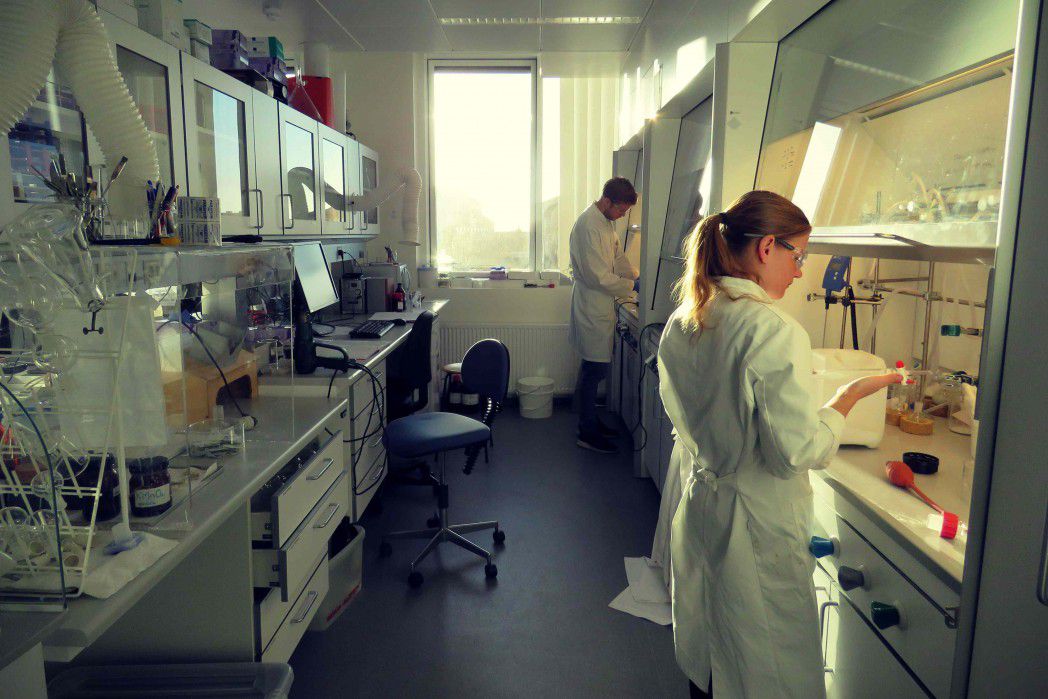by Marlis Stubenvoll
Carbon dioxide is among the most troubling byproducts of our modern lifestyle. Although only making up 0.04 percent of the air, increased amounts of the greenhouse gas in the atmosphere cause severe shifts in the global temperature, commonly known as climate change. Scientists of the Carbon Dioxide Activation Center (CADIAC) in Aarhus are now working to re-establish CO2's reputation. If they succeed, the greenhouse gas could soon be turned into compounds of pharmaceuticals, plastics and other industrial materials.
The ambitious project is now ten months old. "We are still defining our interdisciplinary efforts", says assistant professor Nina Lock, who is part of the varied research team at CADIAC. Nevertheless, CADIAC is one of the national Centres for Excellence, supported by the Danish National Research Foundation with a fund of 60 million DK over the next five years. This wild investment falls into a time, when cutbacks in fundamental science are widespread.
The government bets high on their Danish horse in an international scientific race. In a world that can already feel the negative impact of a changing atmosphere, research on CO2 conversion comes thick and fast. A popular idea is to recycle the gas back into a fuel or to convert it into nanofibre.
CADIAC has its own list of "dream reactions", as material chemist Lock calls them. And indeed, some do sound dreamlike: Carbon dioxide could help fighting ovarian cancer or treat depression as a building block in pharmaceutical substances in the future. Small devices could also capture the gas close to pollutants and turn it into polymers that are used in 3D-printers. For the head of the Center of Excellence, Troels Skrydstrup, this idea might even take a futuristic turn: with an atmosphere that consists of 96 percent carbon dioxide, future Mars explorers could create every tool they need on the spot - simply out of Martian air and a CO2-fueled 3D-Printer.
For now, scientists still struggle with the persistent nature of their favorite problematic substance. Not only do industries, agriculture and transport emit vast amounts of CO2. The molecule is also extremely stable and therefore hard to get rid of. With a double bond between the carbon atom and the two oxygen atoms respectively, scientists have a hard time to crack up CO2 and transform it into a more desirable product.
A catalyst does all the work - a substance that helps to start reactions and makes them run faster. But here comes the second obstacle: For CO2 activation, these catalysts usually involve precious metals like Platinum or Palladium. Both metals are so rare and costly, that investors name them in one breath with gold. Therefore Nina Lock works on a structure, where CO2 and the catalyst meet each other in a solid instead of a liquid environment. This could make it way cheaper to recycle the rare metals after the process. In her work she also tries to replace the rare metals. Ultimately, research in this area has to apply to two rule sets: the laws of nature and the demands of commerce. "We want to see how far we can drive this chemistry and hopefully it will be so cost efficient that it can be applied", says Lock.
There is still much to do for the heterogeneous group of chemists. The researchers spend just as much time over books and in focused discussions as surrounded by the fragile flasks and buzzing apparatuses of the laboratory. Half of the work is to identify potential catalysts and make theoretical assumptions on how they will behave.
Then it is time to put the safety goggles on and enter the lab: "Momentarily, I am changing small parameters, for example the temperature, and see how the reaction changes", says PhD-student Thomas Andersen, while carefully handling a white, powdery substance, "It is basically trial and error." -"However, all we do is well grounded!", adds Lock. After all, CO2 research doesn't come out of thin air.
Photos by Anna FerrariOriginal


